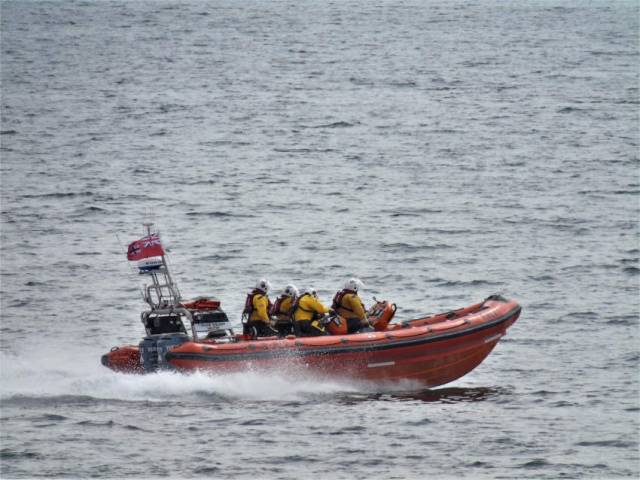Kilkeel’s volunteer lifeboat crew worked fast to help clear a speedboat with engine troubles from a busy shipping lane yesterday afternoon (Tuesday 27 August).
The 16ft Bayliner, with one person on board, had broken down in Carlingford Lough and was in danger from incoming and outgoing shipping traffic, according to Kilkeel RNLI.
Kilkeel’s inshore lifeboat launched at 1.10pm headed south along the Co Down coast, and on arrival at the scene they found that the speedboat has been restarted.
Checking that the skipper was fine, they ensured there were no further issues before escorting the skipper back to his mooring in Greencastle.
The previous evening, Carrybridge RNLI’s inshore lifeboat Douglas Euan & Kay Richards and rescue water craft were launched to a vessel with its own engine difficulties some two miles downstream of the River Erne hamlet.
When the lifeboats arrived on scene, the casualty vessel — with two person on bard — was found floating close to the shoreline.
Once those on board were found to be well, a volunteer from the rescue water craft boarded their vessel to help set up a tow line and it was brought back to its private berth in the hamlet.
Carrybridge RNLI helm Chris Cathcart later advised all boat users: “Before setting out on your journey, please plan your route and carry out regular checks of their vessels. Also have a means of calling for assistance if you find yourself in trouble.
“If you see someone in trouble on the water or are in difficulties yourself, the number to dial is 999 or 112 and ask for the coastguard.”
































































